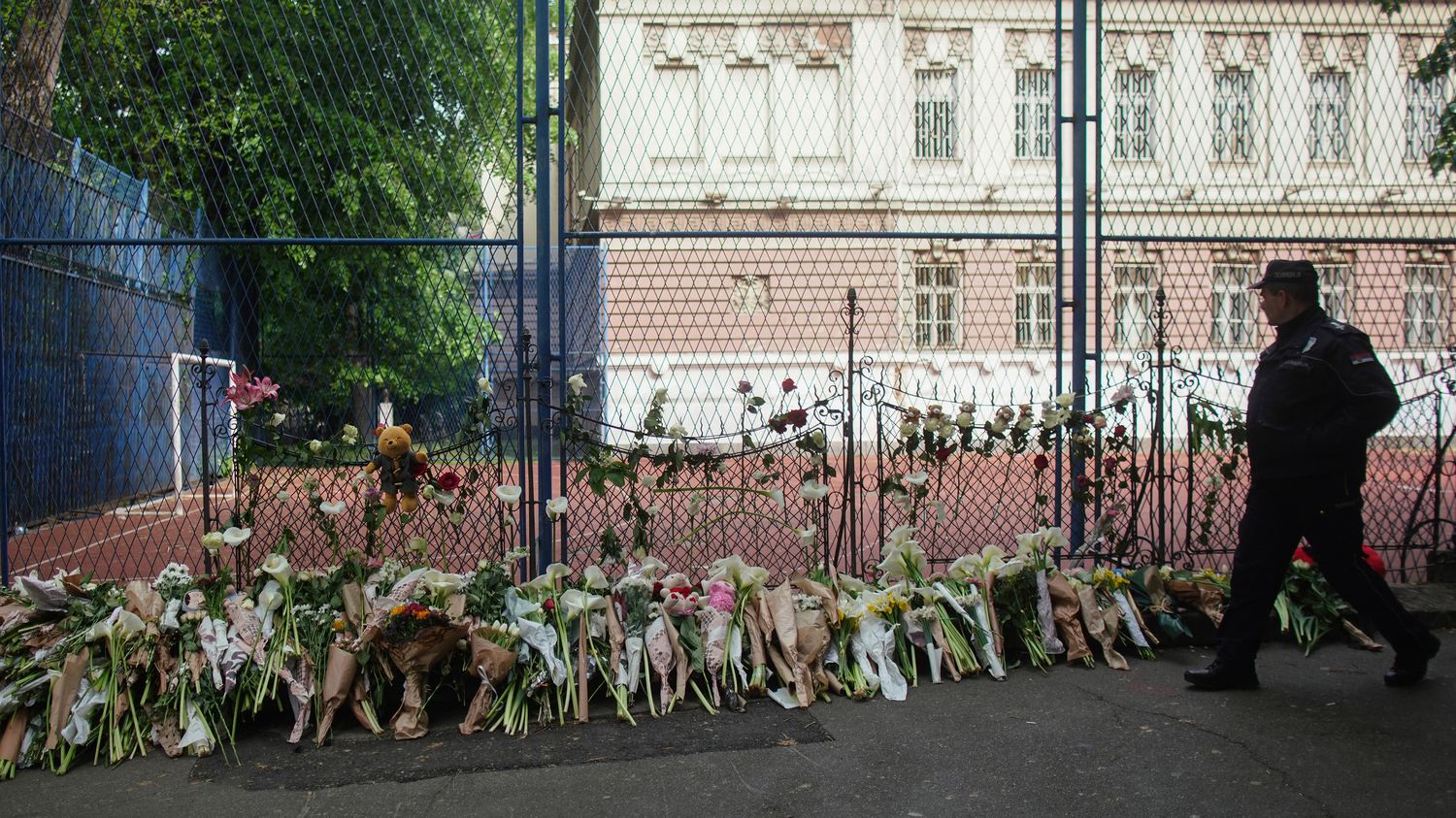According to the Swiss NGO Small Arms Survey, Serbia is the third country in the world for the circulation of firearms, with 39 per 100 inhabitants.
A new drama in Serbia. A massacre left eight dead and 14 injured in the country, Thursday evening, May 4, less than two days after an attack in a school in Belgrade which claimed the lives of nine people, including eight children.
After several hours of tracking, a man was arrested on Friday morning. “UB, born in 2002”, according to the Serbian government, is suspected of having committed the killing with an automatic weapon in three villages near Mladenovac, about sixty kilometers from the capital. It is “one of the most difficult days in contemporary history” of the country, lamented the Serbian President, Aleksandar Vucic, quoted by AFP. According to the Swiss NGO Small Arms Survey (content in English), Serbia was in 2018 the third country in the world in terms of the circulation of firearms (tied with Montenegro), behind the United States and Yemen, with 39 weapons per 100 inhabitants. How to explain it?
Arms stocks accumulated during the war
In the 1990s, because of the wars that led to the end of Yugoslavia, then the conflicts in the different areas of the region, a large number of firearms circulated in the Balkans. Already in 1989, under the Tito regime, 6.1 million small arms and light weapons were recorded, according to a report by the Ministry of Defense and Iris in 2017.
The end of the fighting led to a drop in demand, but did not lead to a decrease in the number of weapons in circulation. The maintenance of the local arms industry is particularly in question, according to Iris. “Whether in Serbia, Croatia or Montenegro, small arms and light weapons continue to be produced,” explains the report. The latter also highlights the “misappropriation in army stocks” and the “corruption”related in particular to “the low wages of the workers and the meager pay of the soldiers”.
According to the Swiss NGO Small Arms Survey, in 2018 there were 2.7 million firearms held by civilians in Serbia, for 7 million inhabitants. Of these, 1.18 million were officially registered and 1.53 million undeclared. The price of a weapon is rather modest. A handgun costs 150 euros, an assault rifle 250 euros, according to Philippe Nobles, head of section within the central direction of the judicial police, quoted in the Iris report. These weapons can earn more when exported. “In France, the resale price is 1,500 to 3,000 euros”continues the specialist.
Some of the assault rifles used in the attacks of November 13, 2015 in Paris were produced by the arms factory of the former Yugoslavia. In January of the same year, the killers of Charlie Hebdo had used a Balkan rocket launcher, AFP recalled in 2021.
An “embedded gun culture”
The killings of recent days refer to other similar events that have marked the country, underlines Reuters (article in English). In April 2013, again not far from Mladenovac, a villager killed 13 people, including family members and neighbours, before committing suicide. In July 2007, a man killed nine people and injured five others in the village of Jabukovac, before being placed in a psychiatric hospital. In 2015, six people died after a man opened fire at a wedding in Senta. In 2016, a man killed five people, including his wife, living in a café in Zitiste.
“The culture of guns is well anchored here”explained in 2016 Predrag Petrovic, of the Belgrade Center for Security Policy, a Serbian NGO, to the German media Deutsche Welle (article in English).
“You see it at celebrations, where people regularly shoot in the air. Guns are still seen as status symbols, as a sign of power.”
Predrag Petrovic, member of the Belgrade Center for Security Policyat Deutsche Welle
“Having a gun is not a problem in itself. But guns are also used to settle everyday disagreements”, adds Pedrag Petrovic. According to him, the instability in the Balkans fueled the feeling that civilians should be able to defend themselves. In addition, the conservatives in power in the region maintain a “delusion of persecution” by spreading rumors of supposed plots by foreign agents to mobilize their constituents, “scaring people”.
Added to this is the widespread practice of hunting. President Aleksandar Vucic thus mentioned some 360,000 weapons linked to this activity on Friday, according to data cited by AFP.
A framed weapon port
However, on paper, the carrying of weapons remains framed. People over the age of 18 can only own firearms with a license issued by the police, says Reuters. A medical examination is mandatory and must be repeated every five years. Gun owners must have no history of crime, mental illness, alcohol or drug use. But according to the Belgrade Center for Security Policy, quoted by Deutsche Welle in 2016, out of 400 cases of misuse of firearms in Serbia studied, 120 were related to the use of illegally possessed equipment.
After the shooting at a school on Wednesday, the Serbian Interior Ministry said in a statement that spot checks at home to verify that the weapons are stored, under penalty of confiscation, reports Deutsche Welle. Aleksandar Vucic has promised to “disarm” the country. In particular, he promised a revision of the license to carry light weapons, according to AFP.
